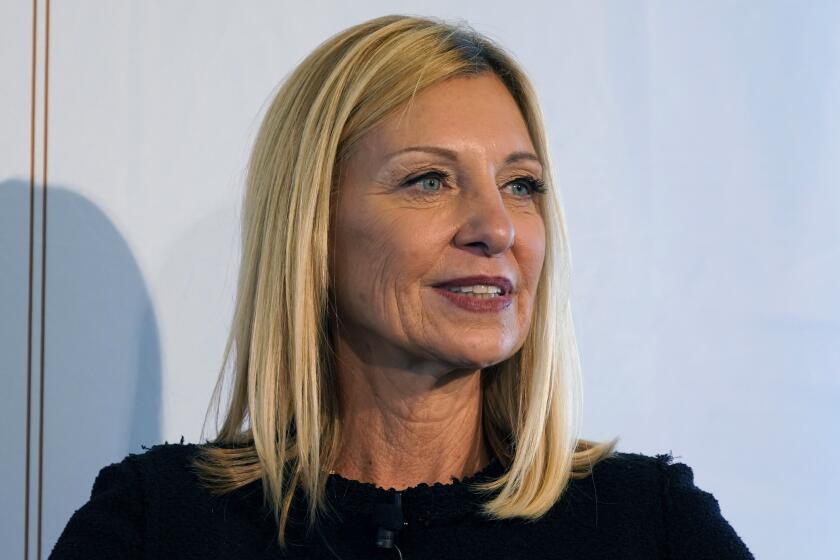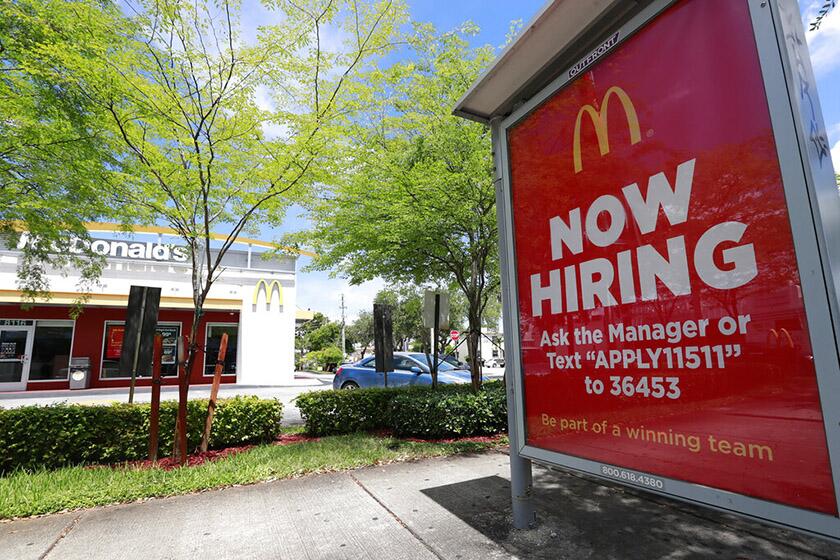New Trading Ideas Lose Momentum
Are you trading stocks at 2 a.m.?
Probably not--and neither are many other people.
But a year ago, amid the unprecedented surge in technology stocks, forecasts of the market’s future included predictions that the number of Americans trading stocks at all hours could only soar.
Such bull-market phenomena as online trading, day trading and after-hours trading seemed to have unlimited growth potential.
Things look a little different today, in the wake of the broad market’s worst calendar-year decline since at least 1981 and the devastating collapse of the tech stocks that many small investors had come to own.
Online trading volume has cooled considerably. People no longer are quitting their jobs to day trade. After-hours trading is an afterthought to most investors, if that.
What’s more, new electronic trading systems that were supposed to challenge the New York Stock Exchange and the Nasdaq market--especially for small investors’ orders--have been slowed by competitive problems and other issues.
Certainly, these trends still will have a significant impact on the market over time, experts say. A fresh surge in share prices could quickly revive investors’ interest in new trading options.
Nonetheless, the pace of change has been neither as fast nor as dramatic as many had thought. “They definitely haven’t met the hype nor the expectations from a year ago,” said Richard Repetto, an analyst at Putnam Lovell Securities in New York.
Here’s a look at some trends that got a lot of publicity early in 2000, what happened as the year progressed and the outlook:
Online Investing
Among the first casualties of the stock market’s slump was individual investors’ fascination with online stock trading.
At the peak in the first quarter, online investors did an average of more than 1.2 million stock trades a day, according to investment bank Chase H&Q.; The average investor did five trades a quarter.
But by the third quarter, the daily average trading figure had tumbled 31% to 858,400, and the average investor was doing 2.9 trades a quarter. Based on preliminary data from online brokerages, the numbers appear to have fallen further in the fourth quarter.
Brokerage executives point out that the number of new online accounts being opened has continued to grow each quarter--a sign, they say, of strong interest long-term in the market and in online trading.
Even so, new-account growth also has slowed. After climbing 23% in the first quarter, the number of accounts rose 12% in the second quarter and 6% in the third quarter, according to Chase H&Q.;
Online-brokerage executives say trading activity naturally ebbs and flows with the market, and that they still expect more investors to continue to sign up for the convenience of online trading over time.
“I don’t think online stock trading is going away at all,” said Tracey Esherick, executive vice president of Fidelity Brokerage Services.
Still, the tech-stock boom in the first quarter of last year was historic, and it might also have represented a high water mark for individuals’ trading activity.
“I don’t think we’re going to see trading activity levels as high as in the first part of [2000] for a long, long time,” said Russell Keene, an analyst at Keefe, Bruyette & Woods.
Charles Schwab, the No. 1 online firm, appears to be preparing for a deeper slowdown: The firm recently asked employees to take unpaid leave if possible in the first quarter, to help cut costs.
Day Trading
Critics of day trading had long predicted that, once a down market set in, the strategy of trying to play minute-by-minute moves in stocks would go the way of disco dancing and pet rocks.
Day traders countered that they would actually thrive in a down market because they merely need high volatility to profit, and the market’s downside volatility is usually worse than its upside volatility.
As it turned out, both prophesies were way off base.
Many new day traders have in fact been slammed by the market turnabout and have dropped out.
But experienced, semiprofessional day traders appear to be surviving and are still a force in the market.
“The people who are good traders, who survived the past three years, are continuing to do well,” said Michael Green, owner of the Brentwood office of Momentum Securities, a large day-trading firm. But “the newcomers are struggling, and I hardly see any interest from new people.”
Some statistics appear to bear out the idea that the best day traders are still active. At Charles Schwab, for example, trading activity overall in November skidded 16% from October. But volume at Schwab’s CyBerCorp unit catering to frenetic traders was off less than 10%.
That doesn’t mean the game has been easy for remaining day traders. The happy-go-lucky attitude that prevailed as tech stocks rocketed in 1999 and early 2000 has been replaced by a sobering new reality, Green said.
“The looks on their faces, even on days when they’ve made [money], is like they’ve just gone through the ringer,” he said. “They look like air-traffic controllers who have just dealt with a crisis.”
Part of the problem, analysts say, is that even day traders have had a rough time adjusting to the market’s record level of volatility, and the failure of many stocks to rebound even after taking severe drubbings.
Not surprisingly, interest among potential newcomers has shriveled.
Bill Singer, a New York attorney who represents several day-trading firms, said many firms have opened branches overseas--not because business is strong but because they’re finding few new customers in the United States.
“There isn’t enough new business coming in,” Singer said. “A lot of day-trading firms are realizing that the well is running dry.”
It hasn’t helped that state and federal regulators have continued to target day-trading firms for alleged trading abuses.
After-Hours Trading
The logic behind after-hours stock trading was simple: Busy people wanted to trade stocks at convenient times.
The reality is something else: Busy people don’t want to be bothered with off-hours trading.
A number of brokerages and electronic-trading markets began to offer after-hours trading in the second half of 1999 and early in 2000, as a first step toward possible 24-hour globalized trading.
The move was thought to be especially significant for Californians, for whom the regular East Coast trading session ends at 1 p.m.
But trading volume has been disappointing. After-hours activity makes up less than 3% of overall Nasdaq volume, with pre-market trading making up another 1%.
“It hasn’t spread like people thought it would,” Keene said.
Even online brokerages are wondering how after-hours trading will play out. “It’s unclear if it will ever have the volume that you see during the day,” Fidelity’s Esherick said. “It’ll probably catch on over time. It just takes awhile. People are doing other things in the morning and in the evening.”
In the meantime, those investors who choose to trade off-hours do so at their own risk: The light trading volume makes for extraordinary share price volatility, and the risk of trading at wildly disadvantageous prices is high, experts note.
New Trading Networks
Excitement over upstart trading systems known as electronic communications networks was raging a year ago.
Unlike Nasdaq and the NYSE, where human traders often act as middlemen in stock trades--for a price--ECNs seek to save investors time and money by pairing buyers and sellers directly, via computer.
Such ECNs as Island and Instinet so sparked fear among the entrenched markets that the markets began to take drastic steps to fend off the competitors. Nasdaq’s plan to go public was the biggest such reaction.
By early in 2000, ECNs had snagged about one-third of all trades in Nasdaq stocks and had designs on building up their minimal NYSE business. One research firm predicted that ECNs soon would grab as much as 45% of Nasdaq volume.
But ECNs’ market-share gains have slowed, experts say. That’s due partly to the weak market. But other obstacles have cropped up.
For one, the NYSE and Nasdaq are fighting back with their own new trading technologies. Nasdaq has proposed a controversial trade-handling system, SuperMontage, that could set ECNs back significantly.
ECNs say SuperMontage is a thinly veiled attempt by Nasdaq to thwart the new trading networks by making it more cumbersome for investors to trade through ECNs.
“If [SuperMontage] were implemented in its current form, it would be a threat to the ECNs,” said Dana Stiffler, an analyst at Meridien Research in Newton, Mass.
But the very nature of ECNs also has contributed to their growth slowdown, Keene said. There is only a finite number of stock trades in which a ready buyer and seller meet at the same desired price. Other times, middlemen are needed to purchase stock from a seller and hold it until a willing buyer comes along.
ECNs “may have reached a plateau in terms of market share,” Keene said. “There is only a certain portion [of orders] that are best-suited for ECNs.”
Individual investors once were expected to be among the biggest beneficiaries of ECNs as online brokerages made it possible for customers to trade through them at a low cost. But while some firms, such as Datek Online, have given their customers that option, many others haven’t.
“The majority of retail order flow is still processed the traditional way, so the so-called benefits that ECNs were supposed to bring are going largely unrealized,” Stiffler said.
Another blow came in December: Instinet dropped plans for a retail-oriented electronic trading service.
*
Times staff writer Walter Hamilton can be reached at walter.hamilton@latimes.com.
More to Read
Inside the business of entertainment
The Wide Shot brings you news, analysis and insights on everything from streaming wars to production — and what it all means for the future.
You may occasionally receive promotional content from the Los Angeles Times.










